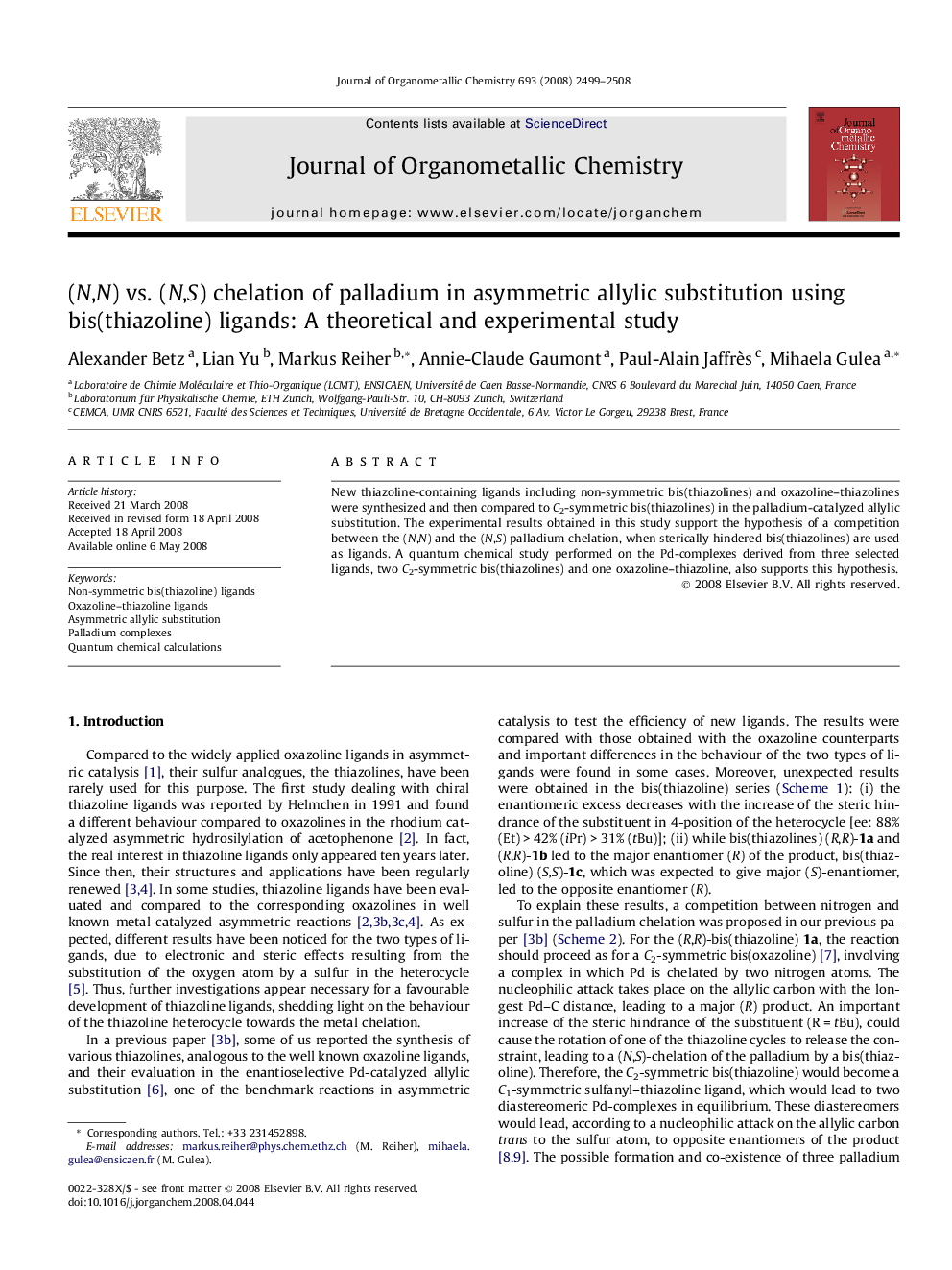| کد مقاله | کد نشریه | سال انتشار | مقاله انگلیسی | نسخه تمام متن |
|---|---|---|---|---|
| 1327948 | 977520 | 2008 | 10 صفحه PDF | دانلود رایگان |

New thiazoline-containing ligands including non-symmetric bis(thiazolines) and oxazoline–thiazolines were synthesized and then compared to C2-symmetric bis(thiazolines) in the palladium-catalyzed allylic substitution. The experimental results obtained in this study support the hypothesis of a competition between the (N,N) and the (N,S) palladium chelation, when sterically hindered bis(thiazolines) are used as ligands. A quantum chemical study performed on the Pd-complexes derived from three selected ligands, two C2-symmetric bis(thiazolines) and one oxazoline–thiazoline, also supports this hypothesis.
Non-symmetric bis(thiazolines) and oxazoline-thiazolines were synthesized and compared to C2-symmetric bis(thiazolines) in the palladium-catalyzed allylic substitution. The experimental results obtained in this study support the hypothesis of a competition between the (N,N) and the (N,S) palladium chelation, when sterically hindered bis(thiazolines) are used as ligands. A quantum chemical study performed on the Pd-complexes derived from three selected ligands, two C2-symmetric bis(thiazolines) and one oxazoline-thiazoline, also supports this hypothesis.Figure optionsDownload as PowerPoint slide
Journal: Journal of Organometallic Chemistry - Volume 693, Issue 15, 15 July 2008, Pages 2499–2508